Fast and Accurate Garbage Air Separation Technology-Air Separator
1). The development prospects and application fields of garbage air separators are very broad, especially in the context of increasing global environmental awareness and growing demand for resource recycling. The following is an overview of the development prospects and application fields of garbage air separators:
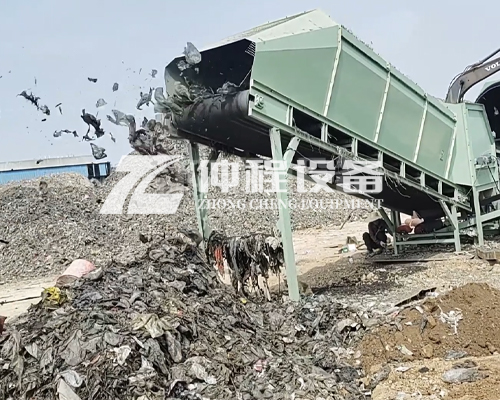
The sorting accuracy of garbage air separators depends on multiple factors and technical means, which work together to ensure that the equipment can efficiently and accurately separate different types of garbage. Here are a few key points:
1. Accurate control of wind speed and direction: By adjusting the speed of the fan and adjusting the direction of the air outlet, appropriate airflow force can be applied to different types and densities of garbage. For lighter materials (such as plastic film, paper), lower speed and directional airflow are used to push them; for heavier materials, higher wind speed or change the direction of airflow to achieve effective separation.
2. Multi-stage sorting system: Many advanced garbage air separators are equipped with a multi-stage sorting process. For example, after the initial screening, there may be secondary or even tertiary fine sorting links to further improve the classification effect. Each stage may combine different physical principles, such as vibration, magnetism, etc., to enhance the overall sorting efficiency and accuracy.
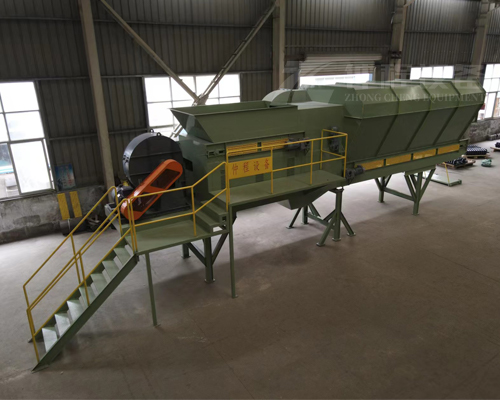
2). Development prospects
1. Technological innovation: With the advancement of science and technology, garbage air sorting machines will become more intelligent and efficient. For example, the application of automatic control systems, sensor technology and artificial intelligence will improve sorting accuracy and efficiency.
2. Policy support: Governments of various countries have paid more and more attention to environmental protection and sustainable development, and have introduced a series of policy measures that are conducive to garbage disposal and resource recycling, which provides a good development environment for garbage air sorting machines.
3. Market demand: With the acceleration of urbanization and the improvement of people's living standards, garbage production is also increasing. How to effectively deal with these garbage has become an urgent problem to be solved, and as an efficient sorting tool, the market demand for garbage air sorting machines will continue to grow.
4. Cost reduction: With the increase in technological maturity and the scale effect brought about by technological progress, it is expected that the cost of garbage air sorting equipment will further decrease in the future, allowing more regions to afford and adopt this advanced garbage disposal technology.
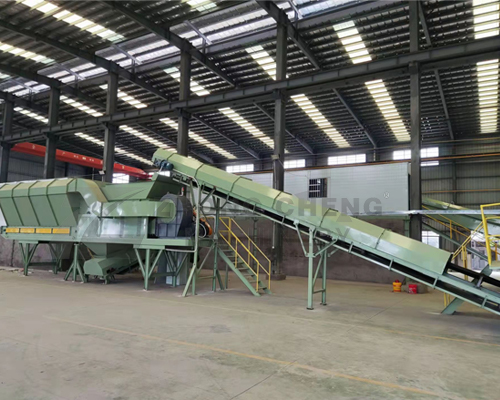
3). Application areas
1. Domestic waste treatment: used to separate light materials such as plastics, paper, wood, etc. in domestic waste for subsequent recycling or harmless treatment.
2. Construction and decoration waste treatment: Classify construction waste and separate reusable materials (such as concrete, bricks) and lightweight waste (such as packaging materials).
3. Industrial solid waste treatment: Applicable to the classification and treatment of solid waste generated in various industrial production processes, helping industrial enterprises to achieve clean production and circular economy.
4. Agricultural waste treatment: It can be applied to the classification of agricultural and forestry waste, such as straw, dead branches and leaves, etc., to promote the development and utilization of biomass energy.
5. Electronic waste treatment: Although the treatment of electronic waste is more complicated, the wind separator can also be used as one of the steps to assist in the preliminary separation of certain lightweight components.
In summary, the garbage wind separator plays an important role in the current and future garbage treatment industry, and as the technology continues to develop and improve, it will be used in a wider range of fields, and will also make greater contributions to environmental protection and resource conservation.
4). Parameter table
| Air Separator 800 | Air Separator 1200 | Air Separator 1600 | |
| Feeding Belt Width | 800mm | 1200mm | 1600mm |
| Air volume | 8000-19000 m³/h | 12000-29000 m³/h | 15000-35000 m³/h |
| Full pressure | 2500Pa | 2500Pa | 2500Pa |
| Power | 38kw | 42kw | 55kw |
| Throughput | 20-30 m³/h | 30-50 m³/h | 50-70 m³/h |
-
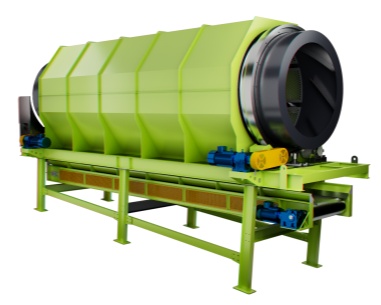 Trommel screenTrommel screen, also known as drum screens, are widely used in various industries for sorting and separating materials.Get Quote
Trommel screenTrommel screen, also known as drum screens, are widely used in various industries for sorting and separating materials.Get Quote -
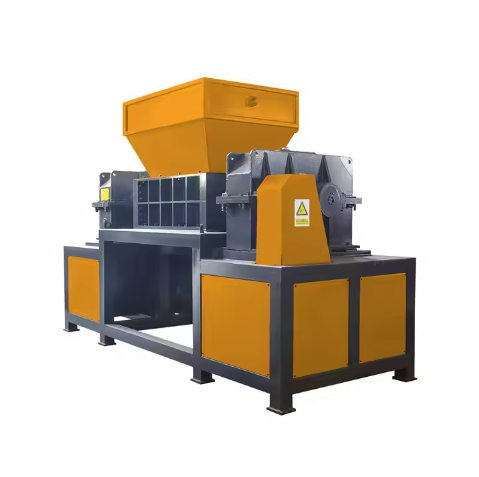 Crop straw double shaft shreddApplications:Biomass Energy Production: Shredded straw can be used as a feedstock for bioenergy plants to produce electricity or heat.Livestock Feed: Reduced-si...Get Quote
Crop straw double shaft shreddApplications:Biomass Energy Production: Shredded straw can be used as a feedstock for bioenergy plants to produce electricity or heat.Livestock Feed: Reduced-si...Get Quote -
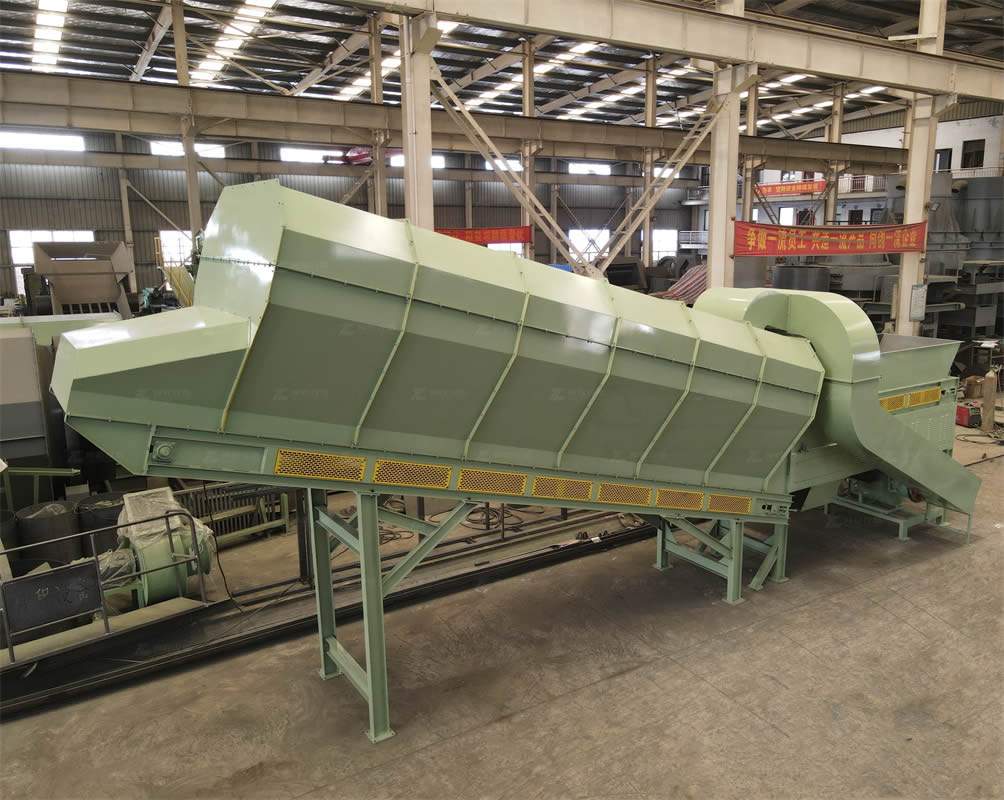 Zhongcheng Air Drum SeparatorAir drum separators effectively separate lightweight materials (e.g., plastics, paper) from heavier materials (e.g., metals, glass). This high efficiency is cru...Get Quote
Zhongcheng Air Drum SeparatorAir drum separators effectively separate lightweight materials (e.g., plastics, paper) from heavier materials (e.g., metals, glass). This high efficiency is cru...Get Quote
-
2024-06-06Drum Screen For Composting PlantDrum screen, also known as a rotary drum screen or trommel screen, is an essential piece of equipment used in composting plants for the separation of compost ma...
-
2024-08-28Scrap rubber product shredderThe shredder of waste rubber products not only helps to reduce environmental pollution, but also improves the reuse rate of waste rubber, which is one of the im...
-
2023-01-12Waste Baler For MSWHigh density solid waste balers are the final step before sending waste to landfill. Horizontal balers designed and manufactured for this difficult job and prov...
-
2023-01-18Metal BalerMetal baler, specifically a hydraulic metal baler, is a machine designed to compress scrap metal into dense, manageable bales. This equipment is widely used in ...
-
2023-01-11Ballistic SeparatorBallistic separators are a crucial component in modern recycling and waste management systems, contributing to more efficient resource recovery and environmenta...



